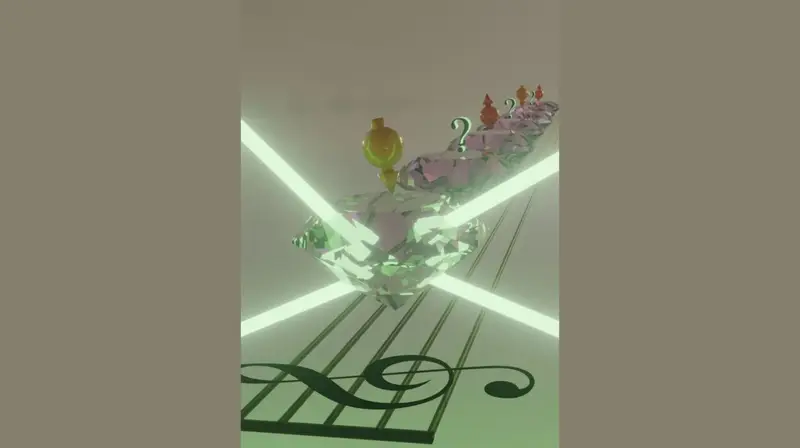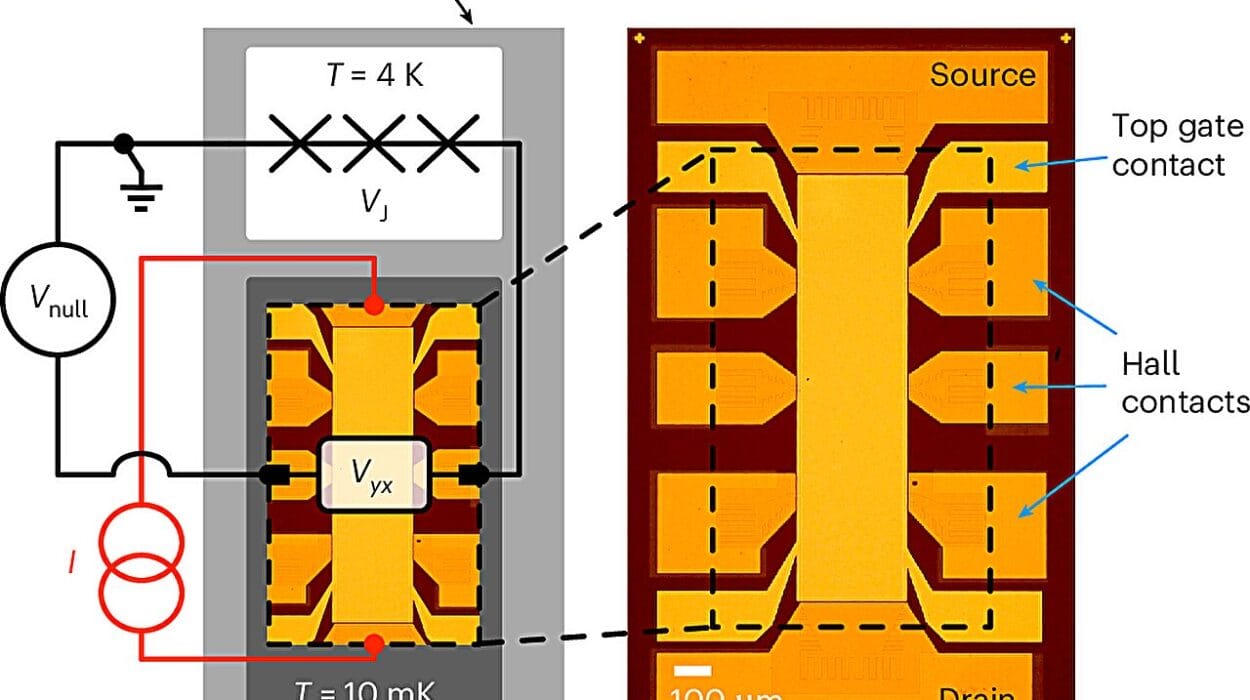When most people hear the word “dimension,” they think of height, width, and depth—the familiar trio that defines the space around us. We live our lives navigating through these three dimensions, where everything has a size and shape that can be measured. But in the language of physics, dimensions are much more than just the spatial boundaries of a coffee table or the height of a skyscraper. They are the fundamental parameters that define all of existence—including things that are far beyond our everyday experience.
From the flat world of a sheet of paper to the twisting loops of string theory, dimensions offer a pathway into understanding reality itself. The journey to comprehend what lies beyond the third dimension has captivated physicists for over a century. It has taken us from Newton’s laws to Einstein’s relativity, and beyond that, into the wild terrain of quantum mechanics and higher-dimensional theories that stretch the imagination to its limits.
This article will explore what dimensions really are, how they evolved in physics, and what it might mean if there are more than three spatial dimensions—perhaps ten, eleven, or even more. We’ll peel back the layers of our reality and peer into the depths of mathematical abstraction and theoretical possibility, revealing a universe far more intricate than the one we experience with our senses.
Understanding the Dimensions We Know
Let’s begin with the basics. In geometry and classical physics, a dimension is essentially a direction in which one can measure or move. A point has no dimensions—it is a precise location in space. A line has one dimension: length. A square adds another: width. A cube adds a third: depth. These three spatial dimensions are the fabric of our everyday experience. You can move forward and backward, left and right, up and down.
These are the directions in which we build, travel, and perceive. But there’s also a fourth dimension that we all live through, even if we can’t move freely in it the way we can in space: time. Time is treated as a dimension because it orders events and allows change. It’s different from space, but just as essential for describing the universe. Einstein’s theory of relativity married space and time into a single entity: spacetime.
In Einstein’s universe, your position in the cosmos isn’t just a matter of where you are—it’s also when you are. So to fully specify an event, we need four coordinates: three in space, and one in time. This 4D continuum describes not just where something is, but how it moves and evolves.
Spacetime: The Fourth Dimension Is Real
Einstein’s Special Theory of Relativity, introduced in 1905, showed that time is not an absolute background ticking independently for everyone. Instead, time can stretch or compress depending on your speed relative to other observers. This insight emerged from the realization that the speed of light is constant for all observers, regardless of their motion.
This constancy forced physicists to revise their understanding of space and time. Space could contract, and time could dilate depending on relative velocity. Time was no longer the universal clock Newton envisioned, but a malleable, personal experience linked to motion. This fusion of space and time became even more dramatic in General Relativity, where gravity itself was described not as a force, but as the curvature of spacetime caused by mass and energy.
Massive objects like stars and planets deform spacetime around them, bending the paths of other objects and even light. The fourth dimension—time—is now intricately woven into the geometry of the universe. Without it, GPS satellites would give you the wrong location. Black holes, time dilation near massive objects, and the expansion of the universe are all phenomena that demand we take this fourth dimension seriously.
But even four dimensions aren’t enough for the wildest theories in modern physics.
The Quest for Unification: A Glimpse at Higher Dimensions
Physicists have long sought a theory that unifies all the forces of nature: gravity, electromagnetism, and the nuclear forces. Newton gave us gravity. Maxwell gave us electromagnetism. Einstein merged space and time. But when quantum mechanics came into the picture, it became clear that gravity and quantum theory didn’t get along very well.
In trying to unite these pillars of physics, scientists began to explore the possibility that more dimensions might be necessary to explain how the universe really works. One of the earliest such attempts came in the 1920s with the Kaluza-Klein theory. The idea was revolutionary: if you extended general relativity to five dimensions instead of four, the equations naturally produced both Einstein’s gravity and Maxwell’s electromagnetism.
It seemed as if the extra dimension held the key to merging these forces. But this fifth dimension had to be incredibly small—curled up on itself like a tiny circle, invisible to our senses. While the theory fell out of favor for decades, it laid the groundwork for the modern notion that higher dimensions might unify the forces of nature.
String Theory: Dimensions Multiply
In the latter part of the 20th century, a radical new theory emerged—string theory. Unlike previous models where particles were treated as point-like, string theory proposed that the fundamental constituents of the universe are one-dimensional “strings” vibrating at different frequencies. The beauty of the theory was that it naturally included gravity.
But there was a catch—string theory only worked mathematically if there were more than four dimensions. In fact, it required ten: nine of space, and one of time. Later, an even more generalized version known as M-theory suggested that eleven dimensions were necessary. These additional dimensions, physicists proposed, were compactified—folded into tiny shapes called Calabi-Yau manifolds, far too small to detect directly.
The extra dimensions in string theory provide room for the strings to vibrate in different ways, giving rise to the variety of particles and forces we observe. Without these extra directions, the mathematics collapses. So in a sense, our universe could be like a vast, vibrating sheet with tiny, hidden threads woven into its structure—dimensions we can’t perceive but which determine the behavior of everything we see.
Visualizing the Unseen: How to Imagine Higher Dimensions
Trying to imagine a fourth or fifth spatial dimension is like trying to taste a color or see a sound. Our brains are wired for three spatial dimensions because that’s all we’ve ever experienced. But through analogies and mathematics, we can get a glimpse of what higher dimensions might mean.
One famous analogy is Edwin A. Abbott’s “Flatland,” a novella about a two-dimensional world inhabited by geometric creatures. For the inhabitants of Flatland, the third dimension is unimaginable. When a sphere passes through their plane, they only perceive a circle growing and shrinking—a 2D shadow of a 3D object.
Similarly, we may only perceive three-dimensional “slices” of higher-dimensional objects. A four-dimensional being could see all sides of a 3D object at once, like seeing the inside and outside of a closed box simultaneously. In higher-dimensional physics, shapes like tesseracts (4D analogs of cubes) exist not in science fiction, but in mathematical equations.
The trick is to stop trying to “see” these dimensions and instead understand them as degrees of freedom—directions in which things can move or vary, beyond our sensory limits but not beyond the reach of logic or equations.
Experimental Evidence and the Limits of Detection
Despite the elegance of higher-dimensional theories, there remains a fundamental problem: we can’t see or touch extra dimensions. If they exist, why are they hidden? The answer lies in scale. These dimensions could be compactified at scales as small as the Planck length—about 10−3510^{-35} meters. That’s so small that even our most powerful particle accelerators can’t probe it.
However, physicists are still looking for clues. One idea is that gravity, unlike other forces, might be able to leak into extra dimensions. This could explain why gravity is so much weaker than electromagnetism or the nuclear forces. Experiments at facilities like the Large Hadron Collider have looked for signs of mini black holes or energy imbalances that might suggest hidden dimensions, but so far, none have been found.
Other approaches involve cosmology. The structure of the early universe, cosmic microwave background radiation, and dark energy might carry imprints of higher-dimensional effects. These are tantalizing possibilities, but the evidence remains circumstantial. For now, higher dimensions remain a beautiful hypothesis—one that fits the equations but eludes our instruments.
Dimensions in Quantum Mechanics and Beyond
Even outside of string theory, dimensions play a crucial role in quantum mechanics. In the quantum realm, particles exist in a multidimensional space known as Hilbert space—a mathematical construct that describes all possible states of a system. While not “dimensions” in the spatial sense, these degrees of freedom are essential to understanding quantum behavior.
Quantum entanglement, superposition, and tunneling all rely on navigating this abstract multidimensional landscape. The famous double-slit experiment, for instance, shows that particles don’t just follow a single path—they explore all possible paths simultaneously, something only possible in a rich, multidimensional space.
Some interpretations of quantum mechanics even propose branching dimensions—where every quantum decision creates new “worlds,” leading to a multiverse. In this framework, dimensions are not just static coordinates, but dynamic, proliferating realities.
Philosophical Implications: What Is Reality?
The idea of higher dimensions challenges our most basic assumptions about reality. If we only perceive a fraction of what exists, what does that say about the nature of knowledge, consciousness, and existence itself? Are we like Flatlanders, mistaking our limited experience for the whole of reality?
This question touches on philosophy as much as physics. Plato’s allegory of the cave, in which prisoners see only shadows of real objects, resonates with modern ideas about dimensional perception. The universe might be far richer than our senses can grasp, and science is the lantern that casts new light on the shadows.
In fact, some physicists believe that space and time themselves may not be fundamental. They could emerge from even deeper structures—entanglement networks, information theory, or abstract mathematical relationships. In such models, dimensions are not the stage on which physics happens, but byproducts of more primal truths.
Conclusion: Dimensions as the Keys to the Cosmos
So, what are dimensions in physics? They are not just abstract numbers or mystical ideas. They are the coordinates of reality, the scaffolding on which the laws of nature are written. From the visible stretch of three-dimensional space to the hidden folds of string theory, dimensions define how everything moves, interacts, and exists.
Exploring beyond the third dimension isn’t just about understanding strange shapes or higher math. It’s about peering into the soul of the universe, asking questions that stretch the mind and spirit alike. Whether or not extra dimensions are ever detected, the quest to understand them has already reshaped our view of the cosmos.
Dimensions are not just directions—they are invitations. Invitations to wonder, to question, and to explore the infinite possibilities that lie just beyond the edge of what we know.






